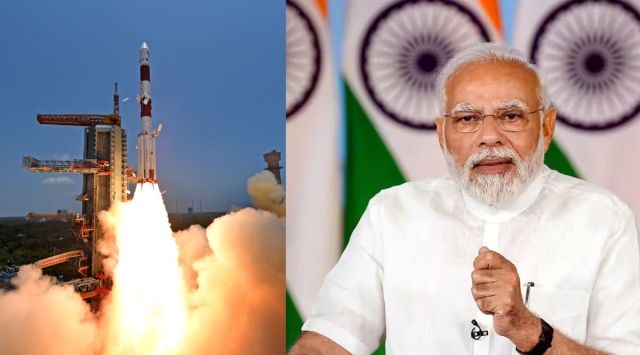Aditya-L1 takes off for the Sun: PM Modi congratulates ISRO
After a four month journey, India's maiden solar expedition will study solar activity and its effect on Earth, other planets and space weather.
 The successful launch of the Aditya-L1 was celebrated by netizens on social media who prayed for the mission’s success.
The successful launch of the Aditya-L1 was celebrated by netizens on social media who prayed for the mission’s success. Prime Minister Narendra Modi congratulated the Indian Space Research Organisation (ISRO) on the successful launch of Aditya L1 solar mission Saturday and said that “India continues its space journey”, following the success of Chandryaan-3.
India’s first space-based solar observation mission took off on the PSLV rocket from the Satish Dhawan Space Center in Sriharikota at 11.50 am. As the Aditya L1 satellite separated from the upper stage of the PSLV rocket, the mission has been deemed a success by ISRO chairman S Somanath.
“Our tireless scientific efforts will continue in order to develop better understanding of the Universe for the welfare of entire humanity,” PM Modi said in a tweet, appreciating the efforts of ISRO’s scientists and engineers for the successful launch.
After the success of Chandrayaan-3, India continues its space journey.
Congratulations to our scientists and engineers at @isro for the successful launch of India’s first Solar Mission, Aditya -L1.
Our tireless scientific efforts will continue in order to develop better…
— Narendra Modi (@narendramodi) September 2, 2023
The PSLV rocket is expected to launch the Aditya L1 spacecraft into a highly eccentric Earth-bound orbit. From there, it will use its Liquid Apogee Motor (LAM) to perform orbit manoeuvres that take it further and further away from the planet’s surface. Then, it will put itself on a path that takes it away from Earth’s sphere of influence before cruising to a halo orbit around the first Lagrange point (L1).
The Aditya L1 mission is the 59th mission for PSLV and the 25th that uses the PSLV-XL configuration. The launch vehicle is known as ISRO’s workhorse since most of the space agency’s missions were launched with it. The XL configuration was first used for Chandrayaan-1 and has been used for other missions like Mangalyaan. It is fitted with six strap-on motors to augment the thrust provided by the first stage, the maximum for this vehicle.
The maiden mission will carry seven payloads to orbit to observe the photosphere, chromosphere and outermost layers of the Sun’s atmosphere (corona) using electromagnetic, particle and magnetic field detectors.








